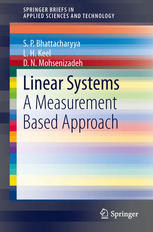

Most ebook files are in PDF format, so you can easily read them using various software such as Foxit Reader or directly on the Google Chrome browser.
Some ebook files are released by publishers in other formats such as .awz, .mobi, .epub, .fb2, etc. You may need to install specific software to read these formats on mobile/PC, such as Calibre.
Please read the tutorial at this link: https://ebookbell.com/faq
We offer FREE conversion to the popular formats you request; however, this may take some time. Therefore, right after payment, please email us, and we will try to provide the service as quickly as possible.
For some exceptional file formats or broken links (if any), please refrain from opening any disputes. Instead, email us first, and we will try to assist within a maximum of 6 hours.
EbookBell Team

4.8
44 reviewsThis brief presents recent results obtained on the analysis, synthesis and design of systems described by linear equations. It is well known that linear equations arise in most branches of science and engineering as well as social, biological and economic systems. The novelty of this approach is that no models of the system are assumed to be available, nor are they required. Instead, a few measurements made on the system can be processed strategically to directly extract design values that meet specifications without constructing a model of the system, implicitly or explicitly. These new concepts are illustrated by applying them to linear DC and AC circuits, mechanical, civil and hydraulic systems, signal flow block diagrams and control systems. These applications are preliminary and suggest many open problems. The results presented in this brief are the latest effort in this direction and the authors hope these will lead to attractive alternatives to model-based design of engineering and other systems.